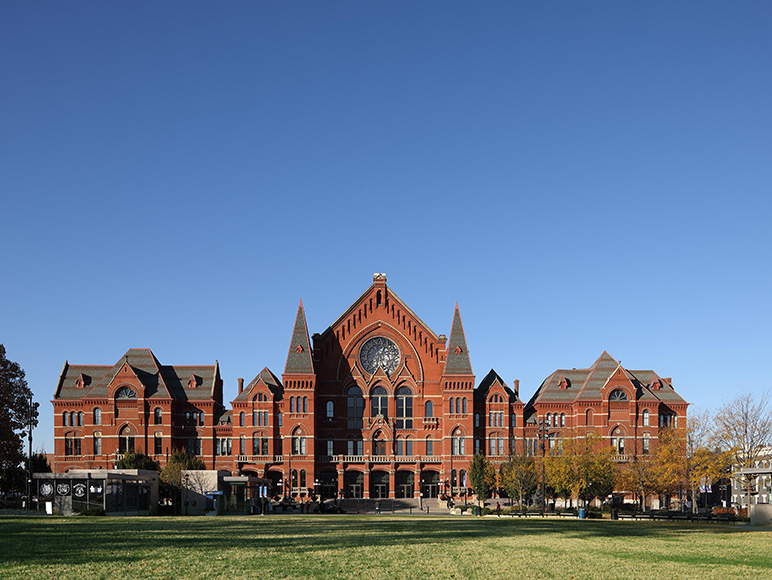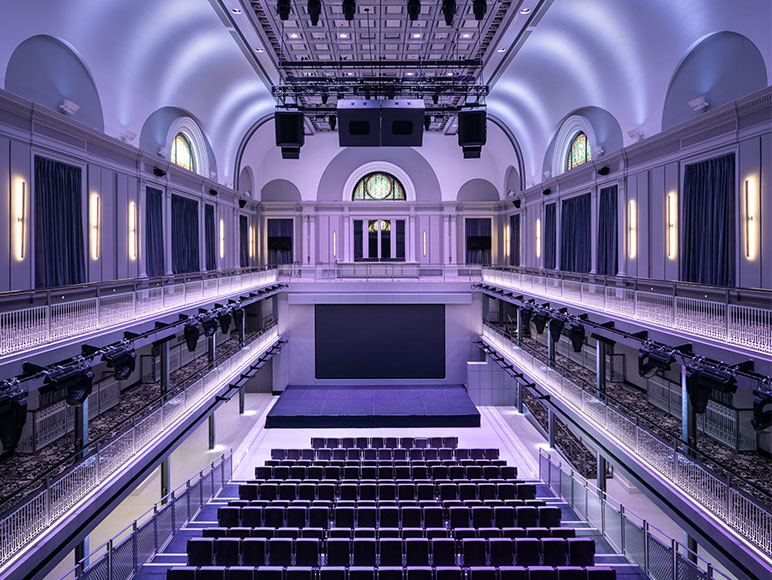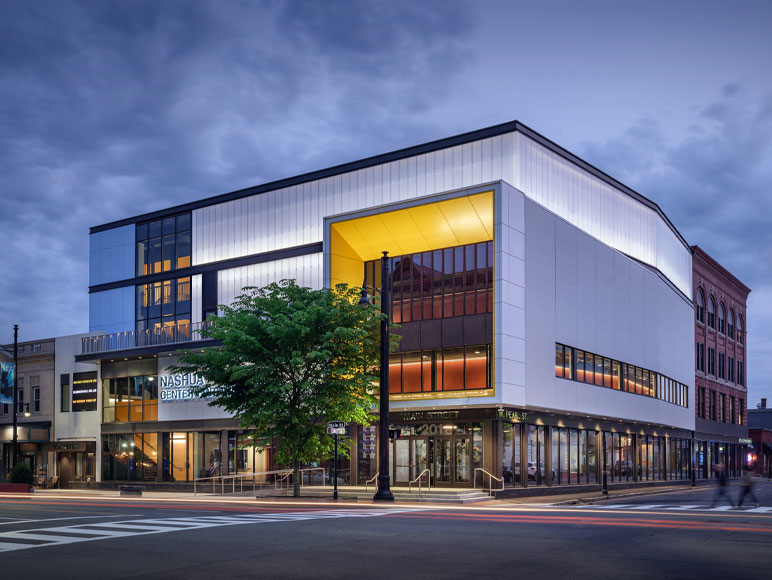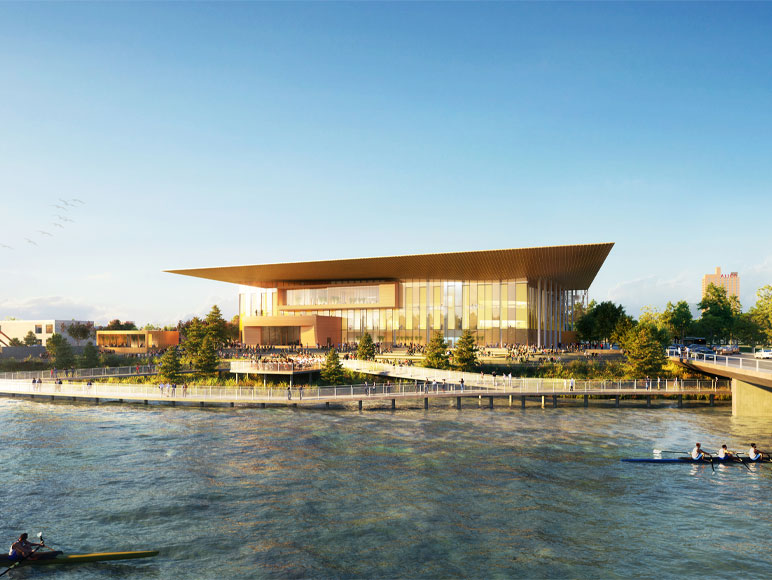Without hesitation OTJ is who I recommend you work with. They're a partner for the long-term.
newsstand
Master Planning for The Performing Arts: The Script for Your Theater’s Future
Even the most seemingly disparate of lauded playwrights share one trait: they understand that the strongest scripts yield the most enduring productions. Without these scripts, even the most experienced cast and crew will struggle to craft performances that transcend a short run, let alone decades of revived productions.
Whether you are a performing arts expert or a professional in another industry, the same truth applies to the facilities that serve your work. If the design of your campus is not informed by a holistic assessment of existing conditions, present and future community needs, and funding sources, as well as driven by a strong mission, sustained success cannot be assured. Like a strong script, OTJ’s Master Planning process sets the stage for your venue’s next act through strategic investigation, insightful analysis, and tailored services ranging from feasibility studies to conceptual design.
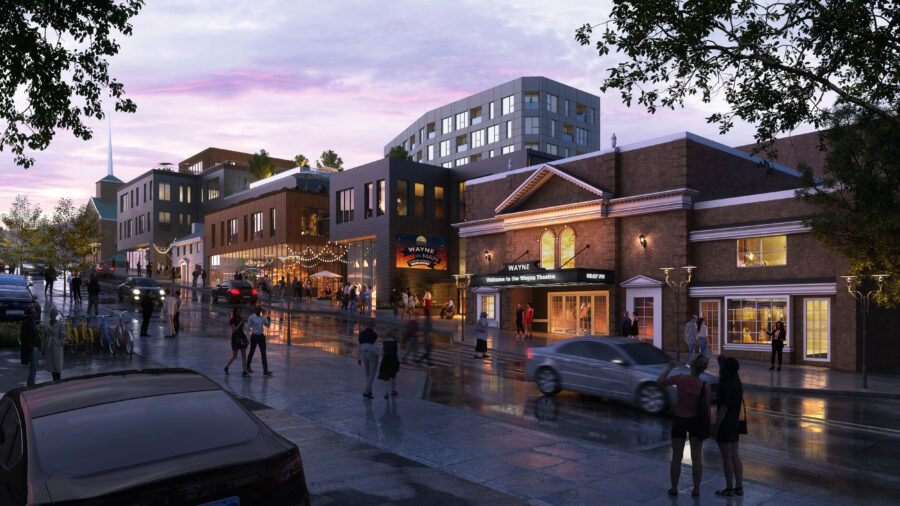
Wayne Theatre Conceptual Rendering
To Plan, or Not to Plan, That is the Question
As Founder and Executive Director of the Wayne Theatre Association, Tracy Straight has surrounded herself with artists, staff, and community members who see The Wayne as not merely a cultural center, but as a “historic landmark…for generations to come.” Armed with 25 years of intelligence, Straight looked to the future of her facility: “you either like what you have… and don’t want to change a thing, or you are willing to take a look at the possibility of new or better ideas that no one had brought to the table yet.”
Similarly, Cristina Balli, the Executive Director of Guadalupe Cultural Arts Center (GCAC), stood at a crossroads. For nearly a decade, Balli had immersed herself in everything “Guadalupe,” learning from her community and working to ensure that GCAC served them to “promote and preserve…Chicano, Latino and Native American arts and culture.” But she realized that her aging site, spread across nine buildings, needed a cohesive plan to continue to support GCAC’s mission.
Both organizations faced important questions about scripting their facilities’ futures and engaged OTJ to build on information gathered — to dig deeper, think big, and develop a master plan for success.
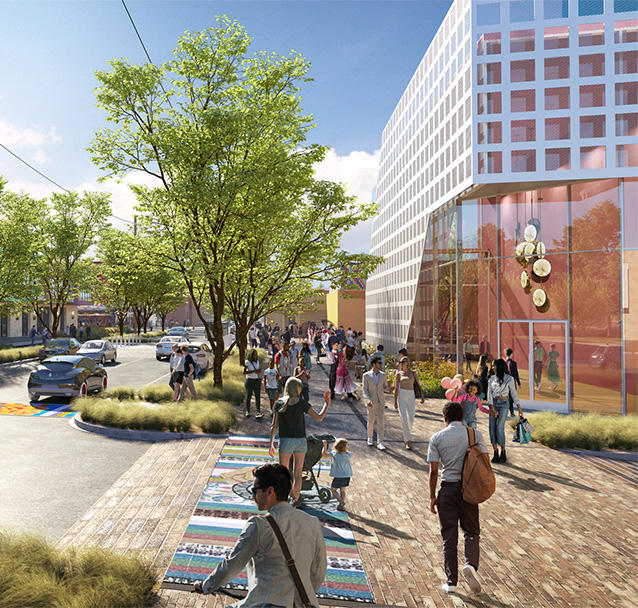
Reviving the Classics: the Wayne Theatre and the Guadalupe Cultural Arts Center
Even works by great playwrights periodically need to be revised or updated. Classics hold an intangible value that resonates across generations but adjustments are sometimes required to better align with contemporary sensibilities.
Similarly, cultural buildings face, even in their longevity, the need to periodically revive structures and ensure their continued relevance. OTJ’s curated process demystifies master planning and yields solutions tailored to our client’s needs. Together with the selected stakeholders, we begin with a joint exploration of the following questions:
- Where is your organization now?
- Where do you want to be?
- How do you get there?
Tracy Straight, Executive Director of the Wayne Theatre, faced these questions. The theatre held undeniable promise with its direct link to Waynesboro, Virginia’s historic downtown, and a mission to “promote the artistic, cultural, and educational opportunities and economic vitality of Waynesboro.” But the first answer (the facility’s aging, disconnected spaces) conflicted with the second (to become a vibrant, modern hub that unites performance and community). Tracy saw the disconnect, but she wasn’t sure how the gap could be bridged.
Likewise, Cristina Balli, Executive Director of the Guadalupe Cultural Arts Center, saw immense potential. Since 1980, GCAC had served as a proud cultural anchor in San Antonio. Its buildings, rich with history, carried the spirit of the community—but they were no longer in sync with GCAC’s evolving needs. Programming, revenue, and education needed room to grow. Cristina and her team envisioned a connected, modernized campus rooted in tradition and built for the future. The destination was clear, but the question remained—how would she begin the transformation before it was too late?
To help Tracy and Cristina answer this final question, “How do you get there?”, OTJ led each client through the three stages of our comprehensive Master Planning Process: Gather, Ideate, and Create.

With varied goals among stakeholders, OTJ provided crystal-clear guidance: first, gather essential information about each facility. This meant OTJ-led site visits, financial assessments, and, most critically, feasibility studies that revealed opportunities and challenges in reimagining both theaters and their adjacent spaces.
Armed with this insight, the next phase came alive. At the Wayne, OTJ led dynamic workshops, ideating bold ideas to help realize Tracy and her Team’s goals, including an outdoor performance venue and expanded arts education programming. Meanwhile, visioning sessions allowed OTJ to conceive an outdoor park linking GCAC’s new Chicano culture museum with an expanded theatre and lobby.
In the final stage, OTJ created flexible options so that the Executive Directors could select the path that best aligned with their missions, goals, and funding realities. Our team produced a comprehensive report and three conceptual designs, presenting a wide financial and programmatic range. These designs were structured around phased approaches to ensure that artistic programming and revenue would continue uninterrupted throughout future improvements. For Tracy and Cristina, the master plan unfolded as a thoughtful script full of possibility.
Our team developed three conceptual design options for each client. The first option for the Wayne emphasizes the downtown’s urban fabric with strong frontages along each thoroughfare, while the second carves into the city block with a multi-use outdoor amphitheater. To activate underutilized outdoor space, the third option incorporates an extensive lawn event area and provides rooftop amenities. These concepts take advantage of an opportunity to reimagine the urban environment as a verdant oasis to congregate and experience the arts.
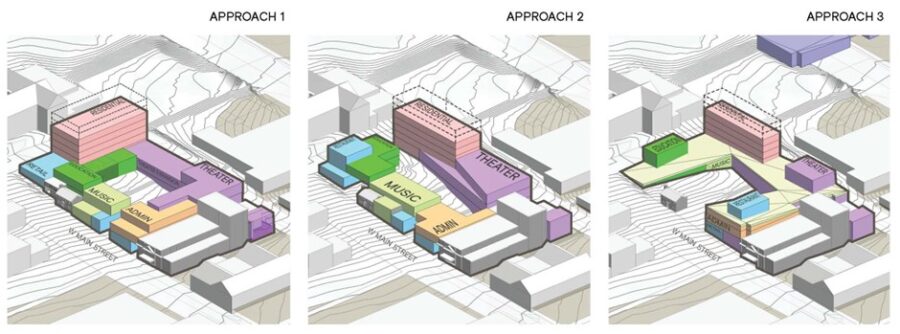
At GCAC, OTJ developed concept designs that reimagined the site. The first creates an urban pocket park that ties the site together and provides a public amenity. The second transforms South Brazos Street into a green promenade, which also provides an opportunity to extend GCAC’s programming into the neighborhood. A central plaza is the focus of the third option, creating an activated space that connects other local cultural institutions to the GCAC. These concepts focus on activating new spaces and encouraging shared programming, contributing to an enriched community experience in Waynesboro.
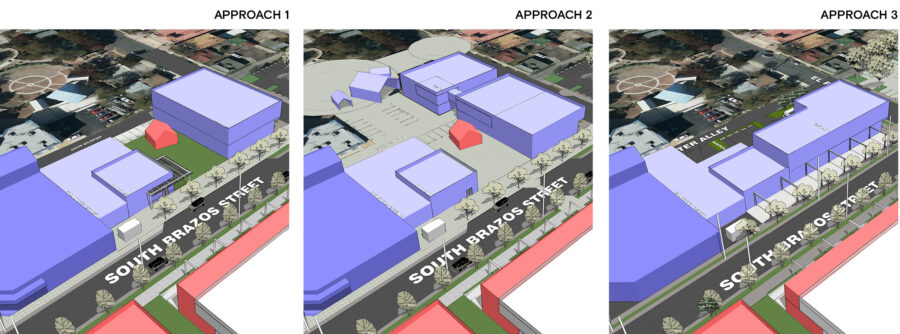
After thoughtful exploration, Tracy and her team at the Wayne chose option two – an inspired design that expands the facility into the city block, drawing audiences in from West Main Street to a welcoming new outdoor amphitheater and central lawn. In partnership with her team, we shaped a plan that reflects The Wayne’s mission through the addition of a music resource center, flexible black box theatre, and outdoor performance venue. Accessibility was a key focus, ensuring an inclusive and open environment. The result? A vibrant, multi-purpose venue — built to meet contemporary needs, generate new revenue, and keep The Wayne at the cultural heart of its community.
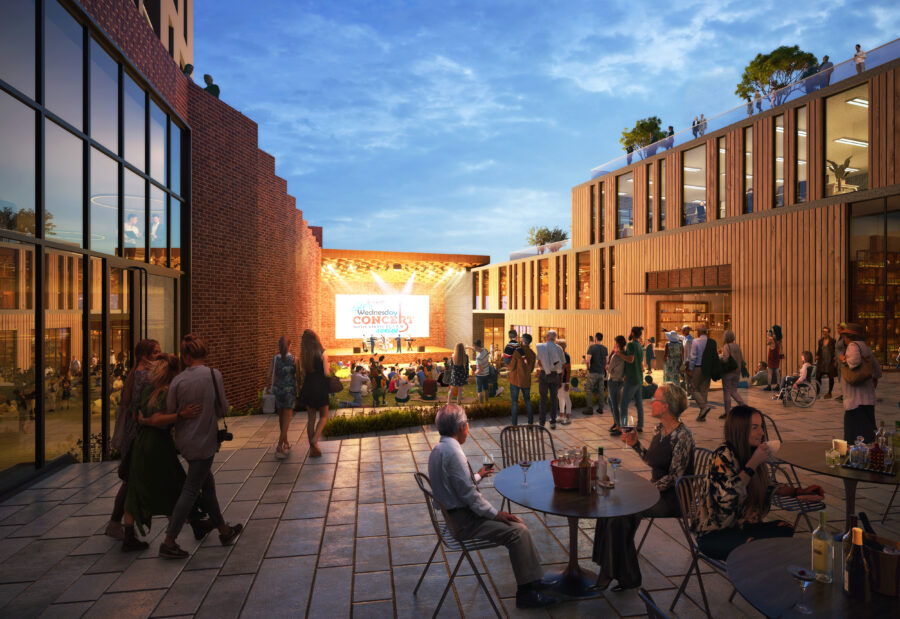
Wayne Theatre Conceptual Rendering
At the Guadalupe Cultural Arts Center, Cristina and her team embraced a tailored solution that brought their vision into focus. Our team combined the best of two initial approaches into a unified plan that connects the Historic Guadalupe Theatre and a new museum celebrating Chicano cultural arts through a central urban pocket park, opening up access from South Brazos Street. Together, OTJ and GCAC prioritized community-driven goals—preserving La Popular Bakery while introducing flexible spaces like a 200-seat theatre and an expanded lobby with revenue-generating concessions. Designed to support dynamic programming and cultural gatherings, the plan’s success propelled GCAC to engage OTJ for a full architectural expansion of its theatre.
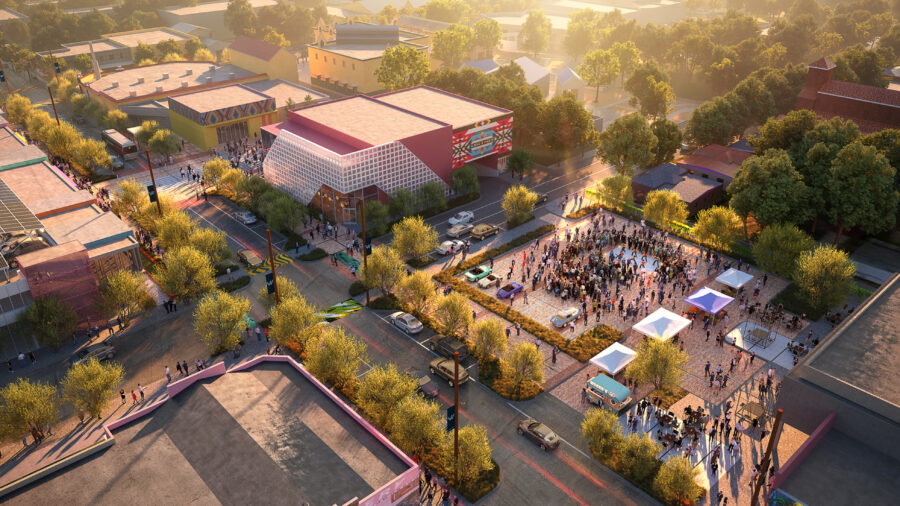
Guadalupe Cultural Arts Center Conceptual Rendering
A well-written script doesn’t just guide a performance, it invites generations to interpret, adapt, and bring it to life in new ways. The same is true of a master plan. For Tracy Straight at the Wayne Theatre, it became a way to give form to long-held dreams. Reflecting on the process, she noted, “Without hesitation OTJ is who I recommend you work with—they’re a partner for the long-term.”
Cristina Balli saw the same possibilities unfold at Guadalupe Cultural Arts Center. After reviewing the final concepts, she admitted, “I have lost sleep in a good way after seeing this work, because I am too excited.” For her, the master plan wasn’t just a set of drawings on a page – it was the beginning of a transformation rooted in culture and community.
For both leaders, and many others like them, the path forward started by treating their buildings not as static structures but as evolving stories, tied to the past, present, and future.
